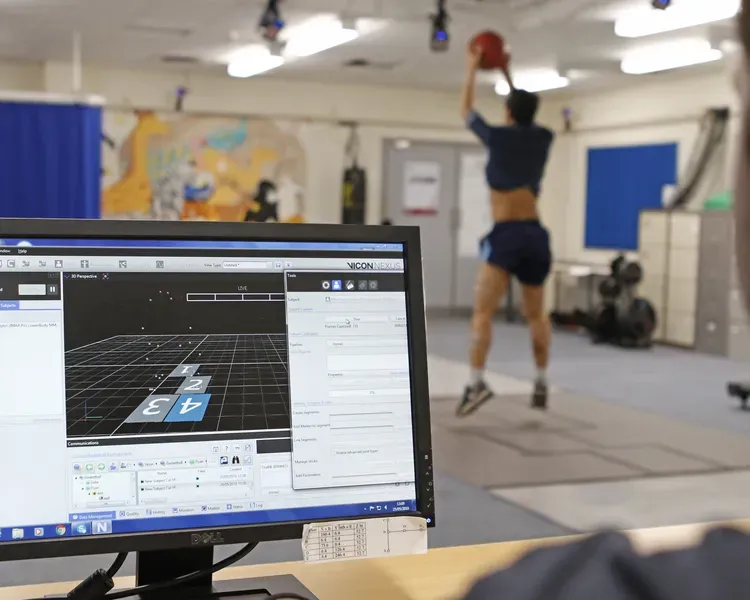Orthopaedic Technology, Motion Analysis, and Movement Rehabilitation MSc
Study areas of orthopaedic and musculoskeletal technology and rehabilitation. Experience state-of-the-art technology in a hospital and medical school setting

Orthopaedic and rehabilitation technology helps with the diagnosis, treatment, and rehabilitation of patients.
Motion analysis uses technology to monitor and assess human movement and posture. It does this in clinical, rehabilitation, and performance enhancement settings.
Movement rehabilitation uses biomechanics to improve human function and performance. It helps to reduce injury risk and manage patients in a clinic.
Why study this course
This master's course combines these specialist areas of orthopaedic and musculoskeletal importance. It allows you to choose the topics that are of most interest to you.
You'll get expert knowledge and skills in a range of areas that employers are looking for:
- orthopaedic and rehabilitation technologies
- technology used to measure and analyse how people move
- rehabilitation methods and trends
- relevant biomechanical principles
- carrying out a research project
- critical thinking.
We place a strong emphasis on the development of your practical skills. You'll access a wide range of state-of-the-art technology.
Teaching takes place in our School of Medicine, which sits within a large NHS hospital. During the course you can apply for a place in our Clinical Observership Scheme. This allows you to take part in active observation of a range of clinics and services in NHS Scotland. This includes orthopaedics, physiotherapy, and clinical mobility services.
This course is ideal if you want to further your education or training to postgraduate level. We welcome people from a range of backgrounds, including:
- physiotherapy
- prosthetics
- orthotics
- rehabilitation
- other health professions
- biomedical engineering
- sport and exercise science
- sports therapy
What you will learn
Through our state-of-the-art facilities, you'll study technology and processes such as:
- joint implants
- fracture fixation devices
- prosthetics
- orthotics
- other mobility aids
- clinical measurement and analysis of human movement
- rehabilitation techniques for orthopaedic, neurological, and musculoskeletal disorders.
First you'll focus on functional anatomy and biomechanics. Then you'll choose one of two specialist pathways to follow:
- orthopaedic and rehabilitation technology
- analysis of human movement and movement rehabilitation.
Throughout your time studying, you'll also work on your research project. You'll learn about research design and methods. We'll work with you to help you choose a research topic that is of interest to you.
The benefits of studying this course with us
Students and employers have contributed to the design of this course. Unlike similar courses, you can choose to specialise in topics that interest you.
Teaching happens in our Department of Orthopaedic and Trauma Surgery (UDOTS). It is a world-leading research, education, and clinical facility.
You get access to state-of-the-art facilities such as:
- marker, marker-less, and wearable motion capture systems (from Vicon and Theia)
- force and pressure mapping instrumentation
- electromyography (from Delsys)
- CAD and simulation software
- 3D printing.
Based in a purpose-built unit in an NHS hospital, UDOTS brings together a unique blend of people. These include surgeons, bioengineers, and allied healthcare professionals. You'll learn from a range of academic and clinical experts.
If you have any questions about the admissions process, studying, or living in Dundee, please contact us